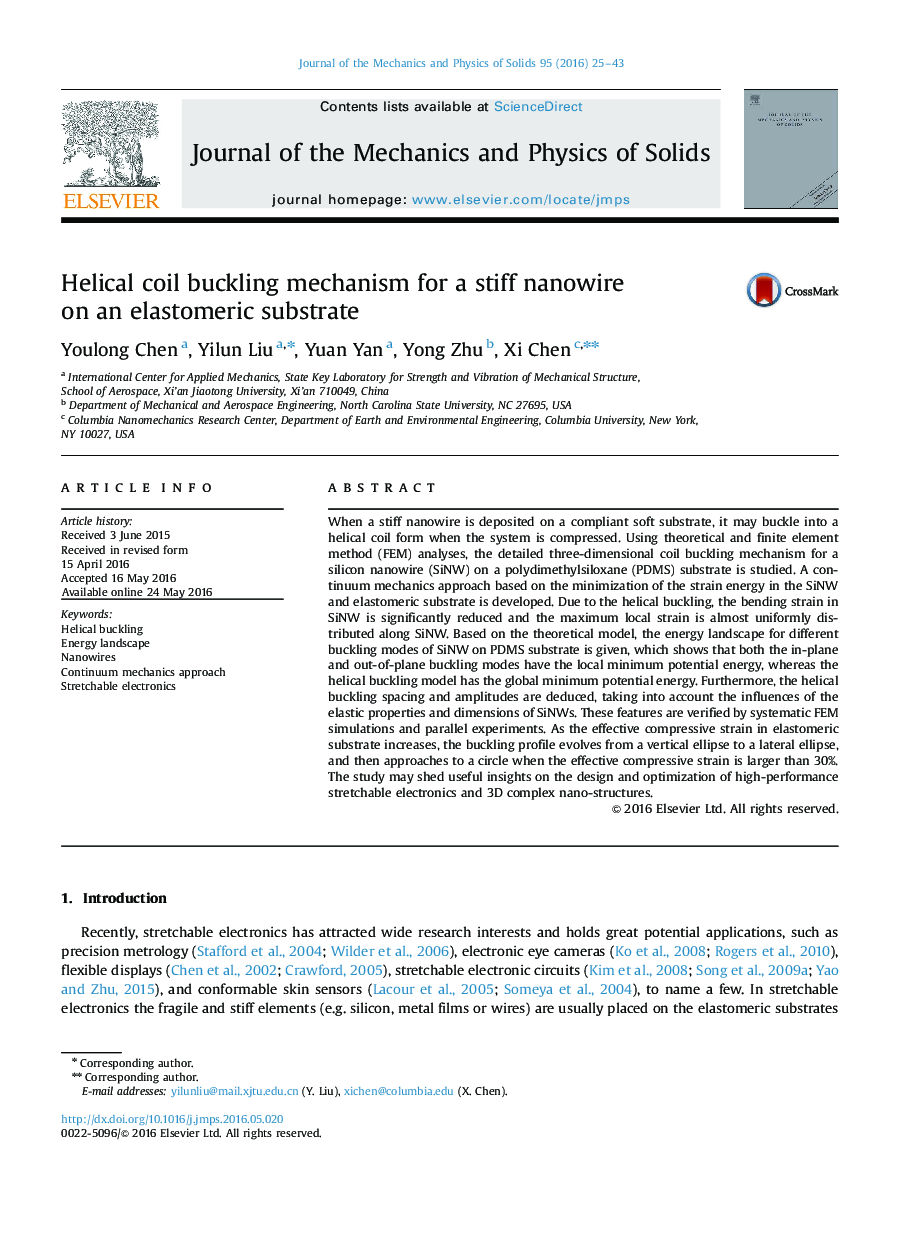| Article ID | Journal | Published Year | Pages | File Type |
|---|---|---|---|---|
| 797193 | Journal of the Mechanics and Physics of Solids | 2016 | 19 Pages |
When a stiff nanowire is deposited on a compliant soft substrate, it may buckle into a helical coil form when the system is compressed. Using theoretical and finite element method (FEM) analyses, the detailed three-dimensional coil buckling mechanism for a silicon nanowire (SiNW) on a polydimethylsiloxane (PDMS) substrate is studied. A continuum mechanics approach based on the minimization of the strain energy in the SiNW and elastomeric substrate is developed. Due to the helical buckling, the bending strain in SiNW is significantly reduced and the maximum local strain is almost uniformly distributed along SiNW. Based on the theoretical model, the energy landscape for different buckling modes of SiNW on PDMS substrate is given, which shows that both the in-plane and out-of-plane buckling modes have the local minimum potential energy, whereas the helical buckling model has the global minimum potential energy. Furthermore, the helical buckling spacing and amplitudes are deduced, taking into account the influences of the elastic properties and dimensions of SiNWs. These features are verified by systematic FEM simulations and parallel experiments. As the effective compressive strain in elastomeric substrate increases, the buckling profile evolves from a vertical ellipse to a lateral ellipse, and then approaches to a circle when the effective compressive strain is larger than 30%. The study may shed useful insights on the design and optimization of high-performance stretchable electronics and 3D complex nano-structures.
